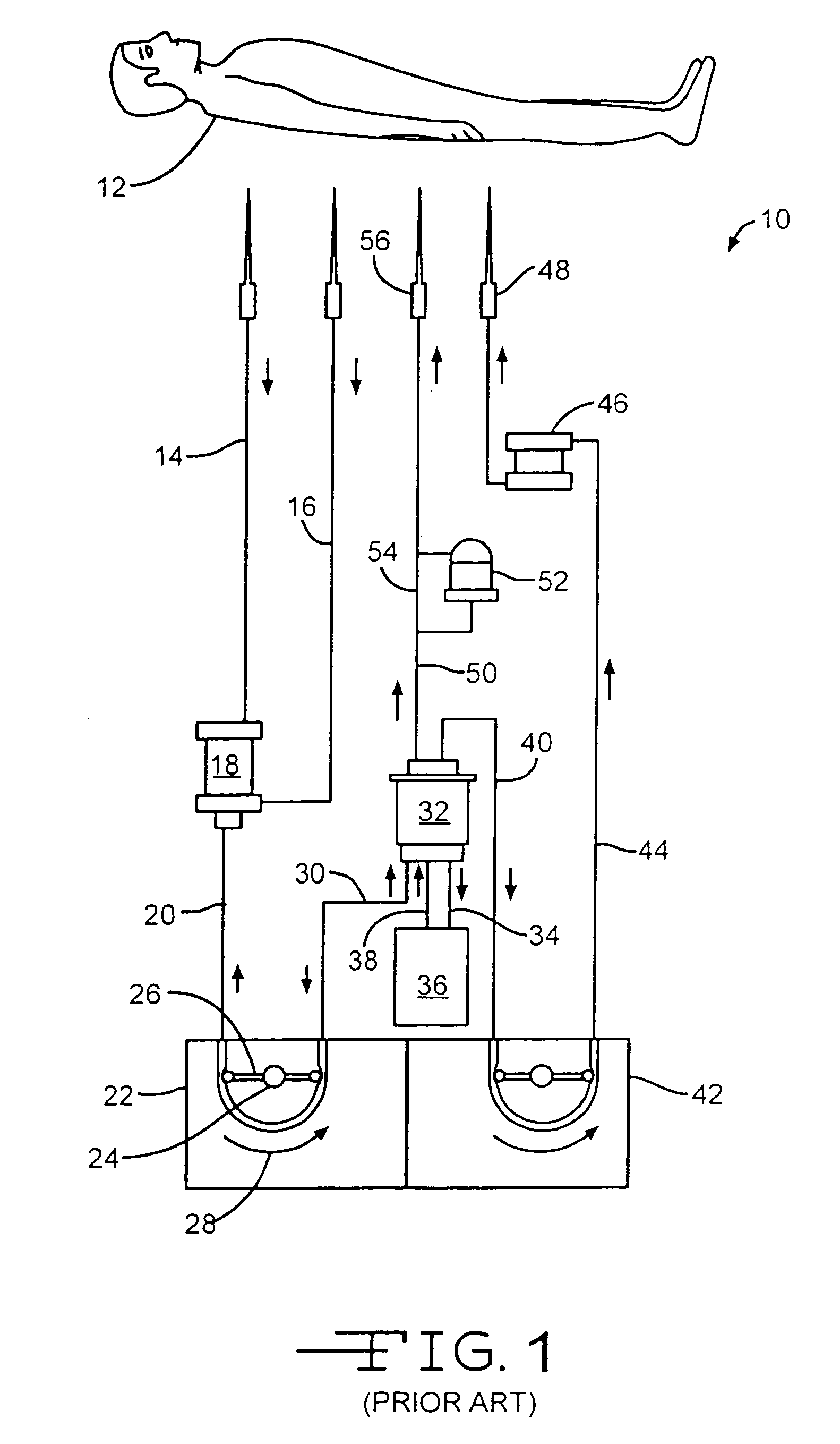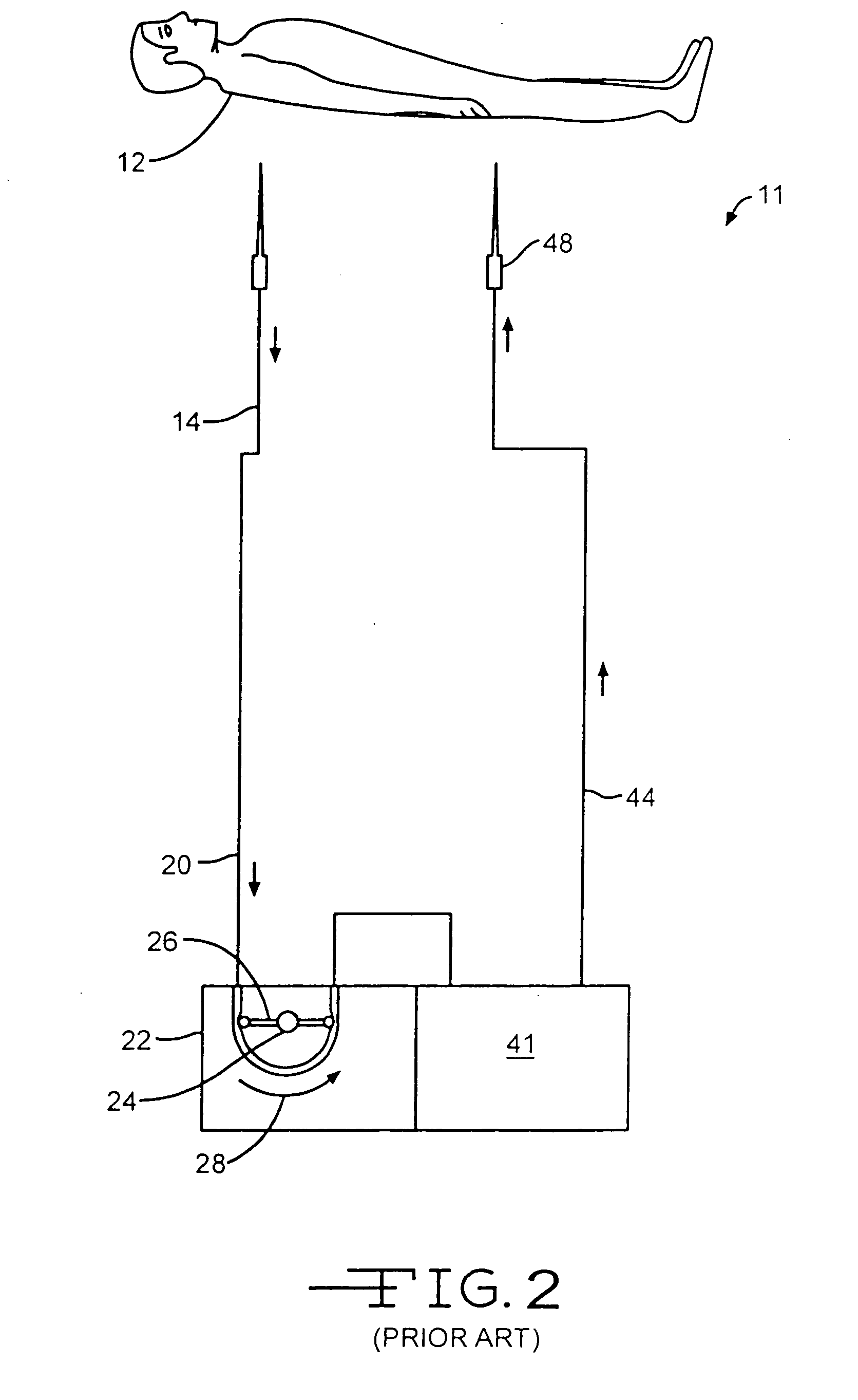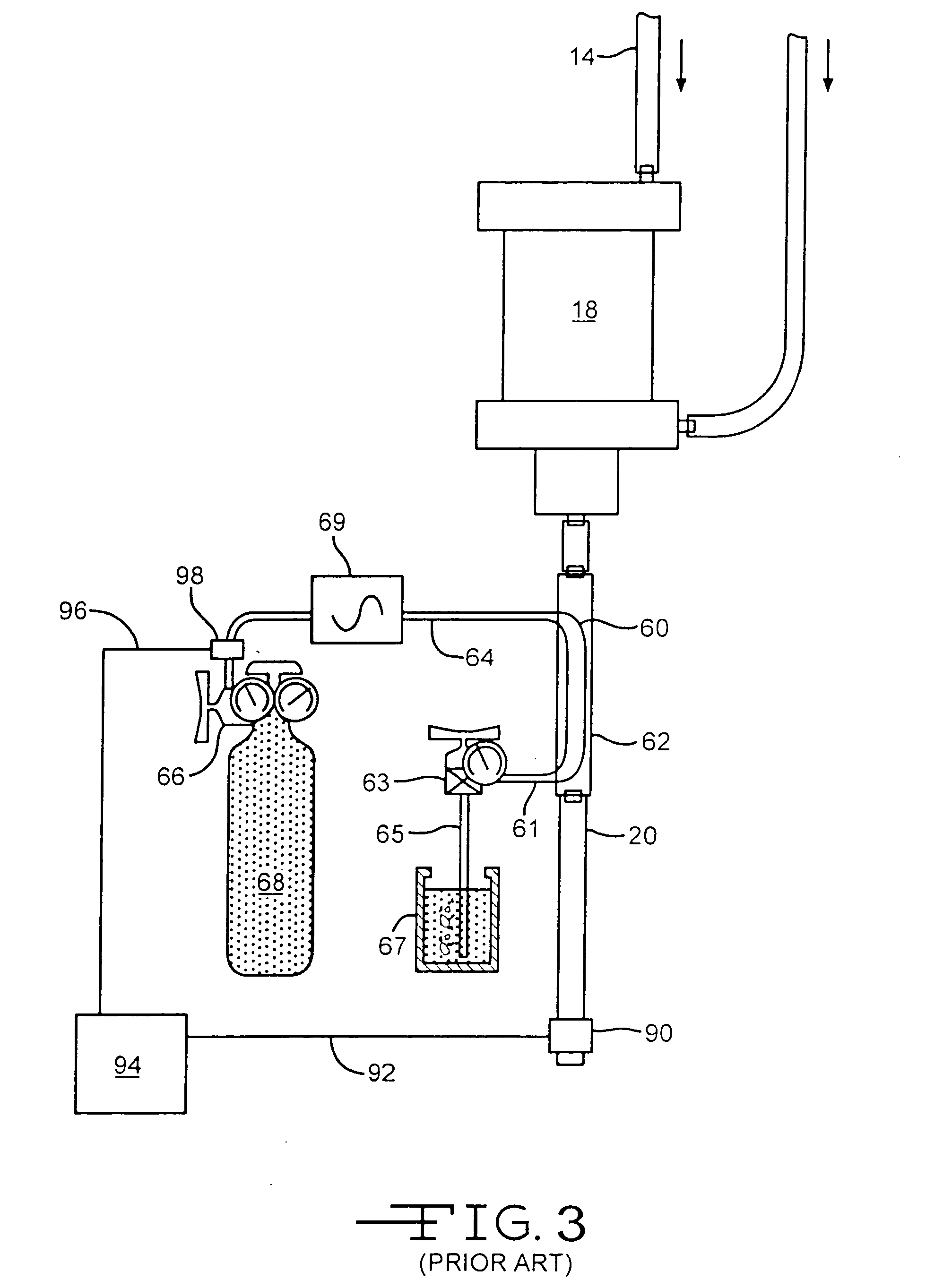Use of exogenous gasoues nitric oxide in the treatment and disinfection of biofilms
- Summary
- Abstract
- Description
- Claims
- Application Information
AI Technical Summary
Benefits of technology
Problems solved by technology
Method used
Image
Examples
example
[0082] Objective: To determine if exposure to gaseous nitric oxide (gNO) affects the ability of B. cenocepacia C8963 to form a biofilm in a 96-well microtiter dish assay.
[0083] Methods: B. cenocepacia C8963, a non-mucoid isolate from a cystic fibrosis (CF) patient, and C9343, a mucoid isolate from the same patient, were spotted on Luria Broth agar and grown at 37° C. overnight. Luria broth containing 0.5% (w / v) casamino acids was dispensed into 96-well polypropylene microtiter dishes (100 μl per well) and the wells inoculated with the C8963 or C9343 using a pin-inoculation device. Blank wells were not inoculated. Dishes were incubated in a humidified, closed plastic container for 24 hours at 37° C. (experiment 1) or in the outer chamber of the matrix incubator (a humidified incubator with controlled air flow) for 27 hours at 37° C. (experiment 2). At 24 hours (experiment 1) or 27 hours (experiment 2), one dish was processed for staining of the bacterial biofilms. The remaining dish...
PUM
 Login to View More
Login to View More Abstract
Description
Claims
Application Information
 Login to View More
Login to View More - R&D
- Intellectual Property
- Life Sciences
- Materials
- Tech Scout
- Unparalleled Data Quality
- Higher Quality Content
- 60% Fewer Hallucinations
Browse by: Latest US Patents, China's latest patents, Technical Efficacy Thesaurus, Application Domain, Technology Topic, Popular Technical Reports.
© 2025 PatSnap. All rights reserved.Legal|Privacy policy|Modern Slavery Act Transparency Statement|Sitemap|About US| Contact US: help@patsnap.com



